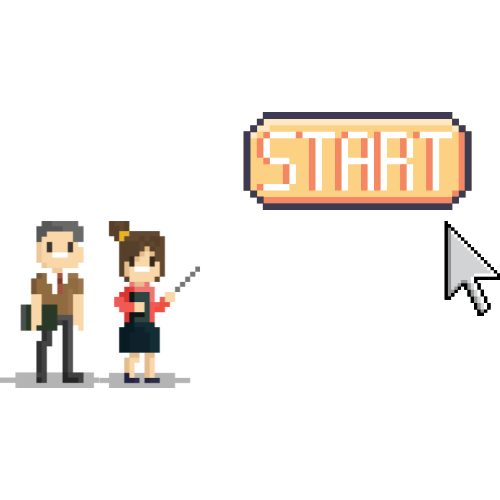Summary:
Strategic thinking in modern organizations is best learned through immersive, hands-on experiences rather than traditional methods like case studies or consulting. The Strategy Quest program simulates real-world challenges, allowing participants to experiment, make mistakes, and learn in a controlled environment. Key lessons include the importance of talent, managing complexity, and aligning bold strategies with business goals. This approach helps bridge the gap between theoretical knowledge and practical application, making strategic thinking an essential skill for organizational success.
Table of Contents
When is a Strategy Not a Strategy?
The Strategy Kernel: What Actually Works
What We Learned from 5 Weeks of Strategic Chaos
Lesson 1: You Can't Learn Strategy from PowerPoints
Lesson 2: The Integration Paradox Will Get You
Lesson 3: Talent Isn't Everything—It's the Only Thing
Lesson 4: Start Bold, Then Align
Lesson 5: Governance is a Time Suck—And Completely Essential
Picture this: Your innovation budget just got slashed by 40%. Your star engineer is threatening to quit. Three departments are demanding priority for their "game-changing" projects. You have two hours to present a revised strategy that satisfies everyone - or at least keeps the company from imploding.
Welcome to the reality of strategic thinking in modern organizations. Yet most strategic training still happens in sterile conference rooms, analyzing case studies from other companies, in other industries, years ago.
We recently hosted a webinar with participants from our latest Strategy Quest cohort: innovation leaders who spent five weeks navigating the chaos of leading a fictional innovation department at "Aeki" (think IKEA, but with more drama). What they discovered challenges everything we think we know about strategy.
When is a Strategy Not a Strategy?
Let's start with a game. Can you guess which companies had these "strategies"?
"Elevate the world's consciousness"
This was WeWork's soaring vision. They managed to elevate their valuation to nearly $50 billion, but with no real guiding policy on profitability or unit economics, they lost $40 billion in value practically overnight when investors finally scrutinized their fundamentals.
"Make healthy juice effortless"
Juicero took a simple problem and created an absurdly over-engineered $700 solution. They hit all their engineering milestones, delivered exactly what was planned, and by all internal metrics were crushing it. One problem: customers could just squeeze the pouches by hand. They closed within 15 months.
"The 2.0 plan to fix profitability" (124 pages)
HP circulated this comprehensive document in 2011. It had brilliant analysis of their problems—organizational complexity, cost structure, market positioning. But without clear priorities or commitment from leadership, it sat unread in inboxes. It took them nine years to see results.
The Strategy Kernel: What Actually Works
As one of our participants, Dave from Team Apollo, noted: "Strategy is pretty poorly understood even from people with MBAs. The baseline on strategy is kind of low."
Drawing from Richard Rumelt's Good Strategy, Bad Strategy, effective strategy has three essential components:
- Diagnosis - A clear definition of the challenges at hand
- Guiding Policies - Your overall approach to dealing with those challenges
- Coherent Actions - Specific steps to implement the policies and overcome challenges
Simple? Yes. Easy? Absolutely not.
What We Learned from 5 Weeks of Strategic Chaos
Lesson 1: You Can't Learn Strategy from PowerPoints
Joyce from Team Apollo (dubbed "The Strategists" by our AI evaluators) shared a crucial insight: "At first we were so enamored with the game itself and the platform. It probably took two rounds to really feel like we had our foundation... that messy beginning into round 2½ to really reframe what was happening."
You need those iterations. You need to feel the pressure, make mistakes, and adjust. As Marta from Team Athena put it: "You learn by doing and you experiment at the same time. The learning you get this way is subconscious almost... you just suck in all the knowledge and concepts that otherwise you would read in a book or watch in a video and then probably forget."
Lesson 2: The Integration Paradox Will Get You
Here's something nobody tells you about innovation success: the more successful your initiatives are, the more internal complexity you create. Teams discovered that managing a healthy portfolio with multiple ventures, teams, and external agencies became exponentially harder as they succeeded.
Your biggest enemy isn't market competition—it's your own organizational complexity.
Lesson 3: Talent Isn't Everything—It's the Only Thing
Even in our AI-driven simulation, talent emerged as the critical constraint. Teams that ignored hiring and retention in early rounds paid dearly later. The irony? Our simulation is run by AI agents, yet it perfectly captured how human talent remains the bottleneck for strategic execution.
Lesson 4: Start Bold, Then Align
Teams discovered organizations are more forgiving of bold bets early on. But as you progress, stakeholders wake up and expect alignment to business goals. Starting conservative and trying to go bold later? That's a recipe for resistance.
As Dave reflected: "We played around with different North Star prioritizations, and over time we realized we had to get even tighter and have just a clear thesis."
Lesson 5: Governance is a Time Suck—And Completely Essential
Multiple teams struggled with what Dave called "balancing looking at new investments to managing your old investments and knowing what's even being influenced."
The unsexy truth? Success requires operational discipline, financial rigor, and clear governance. Not Excel gymnastics, but knowing your numbers and having systems for decision-making.
The Flight Simulator Approach to Strategy
Alex, one of our upcoming participants, captured the opportunity perfectly: "If you could hire McKinsey or Accenture to scenario plan and wargame, it can be beneficial but also rather overwrought... removed from the reality of what happens when random presidents insert tariffs capriciously or supply chains get messed up."
That's why we built Strategy Quest as a business flight simulator. Pilots don't learn to fly by reading about aviation—they spend thousands of hours in simulators where they can crash safely. Where do business leaders go to crash safely?
The traditional approach—hiring consulting firms to run business wargames—requires armies of analysts to prepare scenarios and crunch numbers for every decision. Now, with AI agents and LLMs, we can create that same complexity at a fraction of the cost, with instant feedback loops.
Ready to Practice Strategy, Not Just Learn It?
Joyce summed up the experience: "We're already telling a bunch of people in our network that this is an awesome game and one of the best ways to simulate strategy."
Marta was even more direct: "I'm never going to take another normal standard course after this one. Once you've experimented this way, you realize how beneficial it is to do it interactively."
The gap between knowing strategic frameworks and thinking strategically under pressure is the difference between theory and practice. In today's complex business environment, strategic thinking isn't just another skill—it's the skill that determines whether organizations thrive or merely survive.
The next Strategy Quest cohort starts September 18th. If you're ready to move beyond traditional training and experience strategic thinking in action, learn more about joining us. Because the best way to learn strategy isn't to talk about it -> it's to live it.
Want to see the full discussion? Watch the webinar recording on YouTube.




